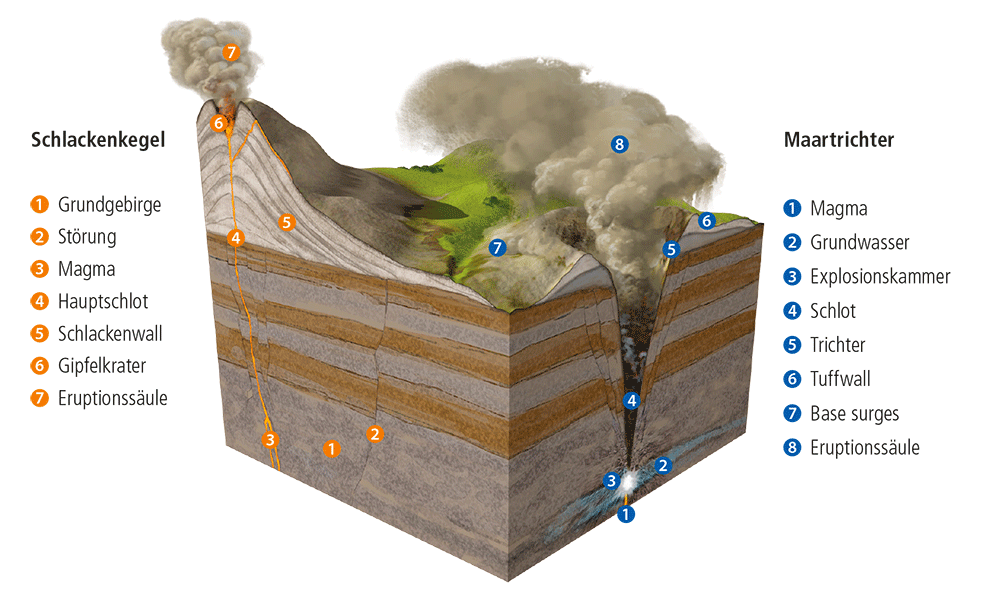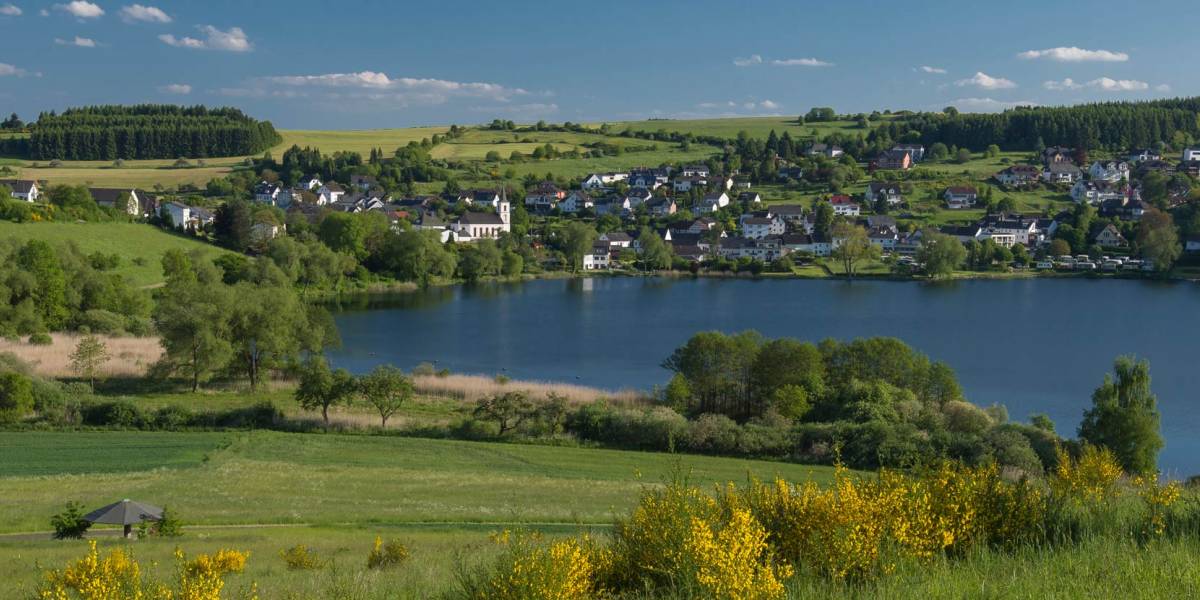Our Maars
Trademarks of the Volcanic Eifel
Our maars - circular lakes with water ranging from deep to azure blue, framed by the green of wooded slopes - are also called the "eyes" of our region. They have always been symbols of the Eifel, adorn numerous postcards and, as natural monuments, are worth a trip for many people. Get to know them. We present our maars and crater lakes with their special features here.
From a bird's eye view, the former craters are clearly visible. In addition to a mountain crater lake and the eleven water-filled maars, many more become recognisable: some are currently silting up and are home to raised bogs, others are already completely dry and are only recognisable as a circular depression. 77 maars have been identified in the Volcanic Eifel so far.Some of the maars in the Volcanic Eifel are very old, such as the Eckfelder Maar. It was formed about 44 million years ago in a first phase of volcanic activity in the Eifel. A second phase began about one million years ago and ended with the most recent eruption, the Ulmener Maar, just 10,900 years ago. So far, 350 eruption centres have been counted in the volcanic Eifel, about 270 of them from the younger phase. In addition to the typical Eifel maars, these also include the volcanic cones.
350
Vulcanos
Maars
Lakes
Fascinating eyes of the volcanic Eifel
Maars are not only found in the Eifel, they are a worldwide phenomenon. The reasons for their formation and their special appearance are to be found in the geological peculiarities of their underground. Volcanic activity is initially caused by liquid, rising molten rock from the earth's interior: magma. This usually happens at all marginal zones where powerful tectonic plates meet (continental drift). Not bound to plate boundaries are hotspots caused by thermal anomalies in the Earth's lower mantle. This includes the Eifel and the anomaly is called the Eifel Plume, a hot zone in the upper mantle that reaches 50 to 60 kilometres below the Eifel. What fascinates scientists also knows how to enchant everyone else: painters and poets, young and old, people from near and far.
How a Maar is formed
Thanks to maar research and the observation and study of current maar eruptions, we now know pretty much exactly how the maars in the volcanic Eifel were formed and what dramatic effects their formation must have had on the landscape.

What happens?
Molten magma hits water-bearing strata as it rises. This water evaporates abruptly, massive explosions are the result. The surrounding rock at the point of contact is fractured, transported upwards and ejected. The blasted explosion chamber then collapses and a funnel remains on the earth's surface, surrounded by a ring-shaped wall with the ejected materials - a maar has been created. The collapsed funnel can fill with water and become a maar lake. Over thousands and millions of years, the maar will change its appearance. Thus, maars silted up in the course of time and turned into bogs. But their traces in the landscape will remain, as here in the volcanic Eifel.
Analysing the relationships of organism
In 1914/1915, the freshwater researcher August Thienemann discovered at the Maars that the environmental conditions of the water body influence the biotic communities. The basic relationships of organic production, lake depth, morphology and oxygen content were considered and lakes could be typified on this basis. The trophic system was later developed from this.

